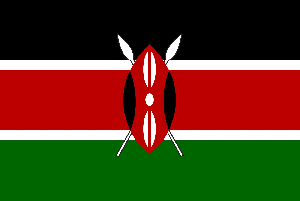Economic analysts belonging to the Ghana Growth and Development Platform (GGDP) say Ghana’s current energy crisis has more to do with fuel unavailability, poor credit risk of state power distributor Electricity Company of Ghana (ECG), lack of adequate supply from the Bui hydro-electric power station among others, rather than lack of generation capacity.
Ghana currently sheds between 440 and 650 Megawatts of power during off-peak and peak periods as a result of a worsening supply deficit.
In a document analysing the crisis, which has led to an intense load shedding programme, GGDP said: “The impression being created by the Government is that the major challenge with Ghana’s erratic power supply evidenced by the persistent ‘dumsor-dumdum’ is the lack of generation capacity, and so signing additional power purchase contracts with independent power producers (IPPs) will automatically resolve this challenge.”
“We are instead of the opinion that the current round of power outages has nothing to do with the lack of generation capacity, but more to do with fuel availability – light cycle crude oil and natural gas to power the thermal plants - and other causal factors.”
In the first of the group’s three-part series of analysis on the crisis, GGDP said the main factors responsible for the current supply condition are: “(a) the very poor credit risk of ECG (currently the sole offtaker on the market); (b) gas supply challenges from the West African gas pipeline as Nigeria, our major supplier, prioritises her domestic industrialisation agenda over regional integration needs; (c) poor infrastructure planning, maintenance and lack of system redundancy resulting in many thermal plants going offline on or about similar times; and (d) distorted tariff regime pushing IPPs to ask for sovereign guarantees in power purchase agreements (PPAs) before commencing operations.”
The group added that the “unavailability of supply from Bui currently, is the primary reason why the ‘dumsor’ has worsened since December 2014.”
Below is the rest of the analysis done by GGDP:
Installed Supply Capacity
According to the Energy Commission, installed generation capacity available for grid supply as at the end of 2013 was about 2,936 Megawatt (MW). Hydroelectric generation at Akosombo, Bui and Kpong constituted 53.8% of this amount whereas thermal generation at the dual fuel natural gas, light cycle oil and diesel plants located in Tema and Takoradi (Aboadzi) provided 45.9% of installed capacity. Renewables constituted only 0.1% whereas LPG generation from Genser power provided the remaining 0.2% of installed capacity.
Historic Demand Condition
Demand has been estimated to increase 10-15% year-on-year in the past three decades. Thus, new generation capacity must increase by at least the same percentage per year in order to support expanding industrial, institutional, commercial, household and other needs as the country grows and develops.
Current Supply And Demand Condition
1. However, only about 1,500 MW or 51% of the 2,936 MW installed capacity has been available in recent times due to a myriad of factors, the primary one being the unavailability of gas to power the thermal plants and government’s inability due to fiscal constraints to purchase light cycle crude oil as an alternative.
This is compounded by the declining rainfall patterns which affect the hydro plants. The Bui hydro plant, for example, has predominantly never run at more than 40% of its installed 400MW capacity since it was commissioned with great fanfare in December 2013 due to the water level being below the level needed for generation. Thus, the dry season we are in currently has to end before rainfall can increase the water level to allow generation.
2. Peak power demand in Ghana currently stands at about 2,000 MW. For 2014, Ghana’s peak load ranged between 1,900-2,200 MW (ex the 10-20% reserve margin needed for system redundancy).
3. Gross electricity supplied in 2013 was about 12,871 GWh (an average of 1,469 MW per day) against a forecast of 16,113 GWh (1,839 MW per day) for the year. Of the actual quantity supplied, hydro comprised only 936 MW (32% of the total installed capacity or 59% of hydro capacity) whereas thermal sources constituted 527 MW (18% of the total installed capacity or 39% of total thermal capacity). This condition created a 20% supply deficit in relation to forecasted demand, thus necessitating the load-shedding (a.k.a ‘dumsor’) that has been carried since 2013.
4. The 2010 Wholesale Power Reliability Assessment report estimated that Ghana loses between 2-6% of GDP annually due to insufficient wholesale power supply, which excludes a number of indirect costs of lost economic output.
Business News of Friday, 13 February 2015
Source: starrfmonline.com













